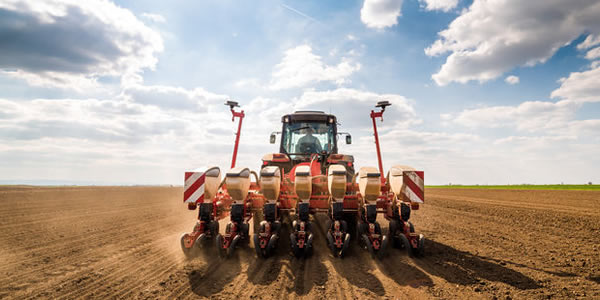Managing a farm effectively involves a combination of agricultural knowledge, business acumen, and practical skills. Here are some key principles to consider for successful farm management:
1. Planning:
- Crop Rotation: Plan a crop rotation schedule to maintain soil fertility and reduce the risk of pests and diseases.
- Budgeting: Develop a comprehensive budget that includes expenses for seeds, fertilizers, equipment, labor, and other operational costs.
- Risk Management: Identify potential risks such as weather conditions, market fluctuations, and implement strategies to mitigate them.
2. Soil Management:
- Soil Testing: Regularly test soil to understand nutrient levels and pH, adjusting fertilization plans accordingly.
- Conservation Practices: Implement soil conservation techniques such as cover cropping, contour plowing, and terracing to prevent erosion.
3. Crop Selection:
- Market Demand: Consider market demand and trends when selecting crops to ensure a profitable yield.
- Diversification: Diversify crops to spread risks and take advantage of different growing seasons and market opportunities.
4. Technology Adoption:
- Precision Farming: Utilize technology like GPS-guided tractors, drones, and sensors for precision farming, optimizing resource use.
- Farm Management Software: Implement software solutions to track inventory, monitor crop performance, and manage finances efficiently.
5. Water Management:
- Irrigation: Use efficient irrigation systems to conserve water and ensure optimal crop hydration.
- Rainwater Harvesting: Consider rainwater harvesting systems to supplement water sources during dry periods.
6. Livestock Management:
- Healthcare: Implement proper healthcare practices for livestock, including vaccination schedules and disease prevention measures.
- Nutrition: Ensure animals receive balanced and nutritious feed for optimal growth and productivity.
7. Financial Management:
- Record Keeping: Maintain accurate records of expenses, income, and production to make informed decisions.
- Budget Monitoring: Regularly review and adjust budgets based on actual performance and market conditions.
8. Human Resource Management:
- Training: Provide training for farm workers to enhance their skills and keep them updated on best practices.
- Communication: Foster open communication to ensure everyone is on the same page regarding tasks, goals, and challenges.
9. Environmental Sustainability:
- Organic Practices: Consider adopting organic farming practices to meet the growing demand for sustainable and environmentally friendly produce.
- Waste Management: Implement effective waste management practices to minimize environmental impact.
10. Market Research:
- Stay Informed: Keep abreast of market trends, consumer preferences, and changes in regulations that may impact the farm.
- Diversification: Explore different marketing channels such as farmers' markets, CSA (Community Supported Agriculture), and online platforms.
Regularly reassess and adapt your farm management practices to evolving conditions, technologies, and market dynamics. Successful farm management requires a combination of strategic planning, efficient operations, and a commitment to sustainability.
Equipment Management
Effective equipment management is crucial for a successful and efficient farm operation. Proper care, maintenance, and utilization of farm machinery and equipment can enhance productivity and reduce downtime. Here are key aspects to consider in equipment management:
-
Inventory and Assessment:
- Create a Detailed Inventory: Maintain a comprehensive list of all farm equipment, including tractors, plows, harvesters, and other machinery.
- Assessment of Condition: Regularly assess the condition of each piece of equipment to identify maintenance needs and potential replacements.
-
Maintenance Schedule:
- Regular Maintenance: Establish a routine maintenance schedule for each piece of equipment to prevent breakdowns and ensure optimal performance.
- Pre-Season Inspection: Conduct thorough pre-season inspections to address any issues before the equipment is needed for critical tasks.
-
Training and Skill Development:
- Operator Training: Provide training for equipment operators to ensure they understand proper usage, safety protocols, and routine maintenance procedures.
- Skill Development: Encourage operators to develop their skills for efficient and effective equipment operation.
-
Storage and Shelter:
- Proper Storage: Store equipment in a dedicated and secure facility to protect it from the elements, reducing wear and tear.
- Shelter Considerations: If possible, provide shelter for equipment to prevent rust, sun damage, and exposure to harsh weather conditions.
-
Upgrades and Technology Integration:
- Assess Technology Options: Explore technological advancements in farming equipment, such as GPS-guided systems and precision farming tools, to improve efficiency.
- Equipment Upgrades: Consider upgrading equipment when it becomes outdated or when new technology can significantly enhance productivity.
-
Spare Parts and Emergency Kits:
- Maintain Spare Parts Inventory: Keep an inventory of essential spare parts to facilitate quick repairs and reduce downtime.
- Emergency Kits: Prepare emergency kits with tools and supplies that can be used for on-the-spot repairs in the field.
-
Fuel Management:
- Efficient Fuel Use: Train operators on fuel-efficient practices to reduce operational costs.
- Fuel Storage and Handling: Implement proper storage and handling practices for fuel to ensure safety and equipment longevity.
-
Record Keeping:
- Maintenance Logs: Maintain detailed records of maintenance activities, repairs, and equipment usage to track performance and identify patterns.
- Cost Analysis: Analyze the costs associated with equipment maintenance and repairs to make informed decisions about replacements or upgrades.
-
Replacement Strategy:
- Lifecycle Assessment: Regularly assess the lifecycle of equipment and plan for replacements based on usage patterns and technological advancements.
- Budget Planning: Include equipment replacement costs in your overall budget to avoid unexpected financial burdens.
-
Collaboration and Networking:
- Sharing Equipment: Explore collaboration with neighboring farms to share equipment, reducing costs for both parties.
- Networking: Stay connected with other farmers and industry professionals to stay informed about new equipment trends, best practices, and potential cost-sharing opportunities.
By implementing a comprehensive equipment management strategy, you can extend the lifespan of your machinery, reduce operational costs, and ensure that your farm operates efficiently throughout the growing seasons.
Features
Grower Notes has 10 modules that contain over 50 features to help small farmers achive their goal.

Service records for your equipment
Efficiently managing farm equipment is crucial for smooth operations. Our Equipment Module simplifies logging all your tools, vehicles, and machinery, giving you a comprehensive view. Easily access service records right from your smartphone while in the field with just a few taps.